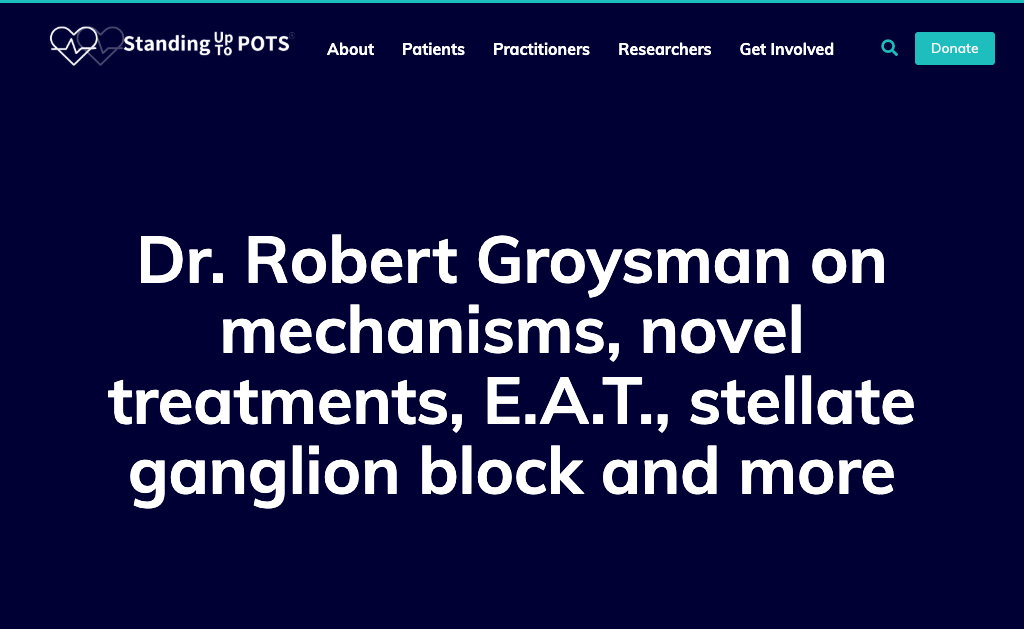Dr. Robert Groysman on mechanisms, novel treatments, E.A.T., stellate ganglion block and more
This episode features pain and interventional physician Dr. Robert Groysman, who treats long COVID, POTS/dysautonomia, ME/CFS, and MCAS at The COVID Institute in Texas. He explains that many of these conditions share six key underlying mechanisms: dysautonomia (including sympathetic overdrive, POTS, and vagus nerve dysfunction), mitochondrial dysfunction, gut dysbiosis/leaky gut, mast cell activation/histamine intolerance, endothelial (microvascular) dysfunction, and hormone imbalances. His approach is to identify which mechanisms are driving a given patient’s symptoms and then target each mechanism systematically, aiming for remission rather than just symptom suppression. For dysautonomia he uses a combination of stellate ganglion block (an ultrasound‑guided sympathetic nerve block in the neck that can calm constant fight‑or‑flight, improve sleep, and often reduce POTS symptoms), true electrical vagus nerve stimulation via the ear, and epipharyngeal abrasive therapy (EAT), a Japanese technique in which the back of the nose/throat are gently abraded under endoscopic guidance to reduce chronic inflammation and stimulate key cranial nerves. EAT typically requires multiple sessions and can improve head pressure, tinnitus, postnasal drip, sinus symptoms, and some aspects of brain fog by reducing inflammatory mediators. He discusses how he assesses endothelial damage with nailfold capillaroscopy, is cautious with aggressive anticoagulation, and now uses nicotine patches only briefly if at all, after newer data showed they do not displace spike protein from receptors. Dr. Groysman emphasizes that even severely affected, bedbound patients should not lose hope, as a mechanism‑based, stepwise approach has yielded substantial improvements in many long‑standing cases; he offers in‑person procedures in Plano, Texas and telehealth consults worldwide, and has written a multi‑volume, evidence‑based book series on long COVID mechanisms and treatments, along with a detailed guide to vagus and trigeminal nerve stimulation.
